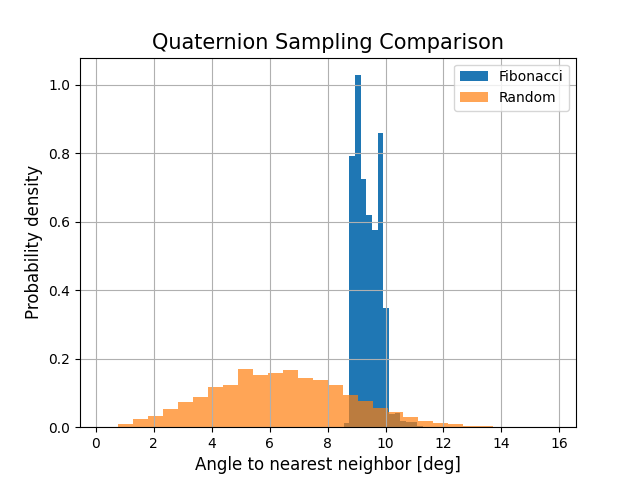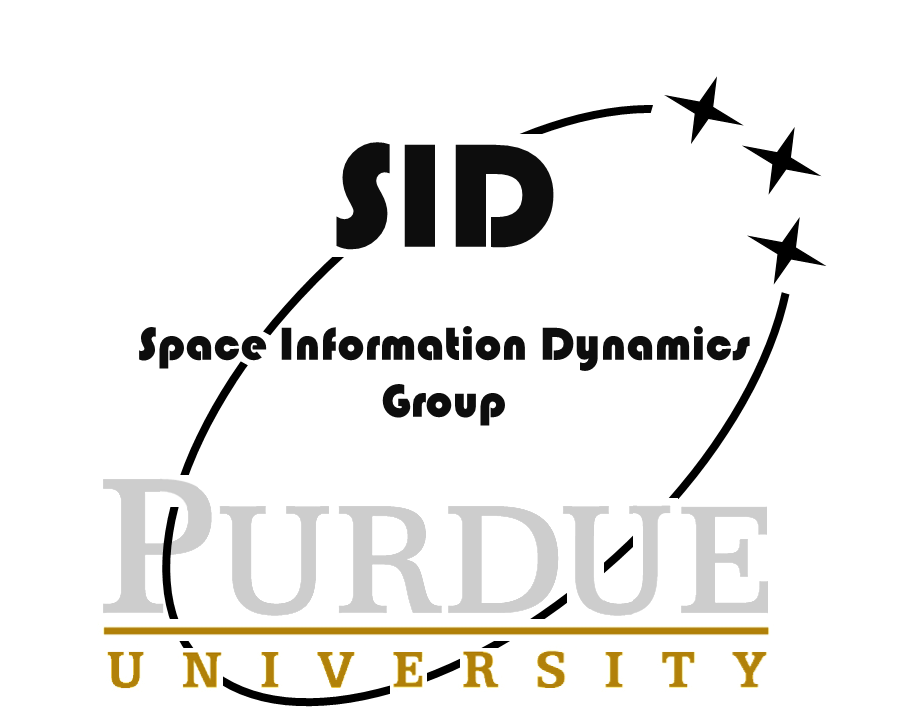Note
Go to the end to download the full example code.
Quaternion Sampling Efficiency#
Comparing methods for sampling quaternions, with an emphasis on distributing the quaternions uniformly throughout orientation space (in the cosine distance sense)

import matplotlib.pyplot as plt
import numpy as np
# from sklearn.neighbors import BallTree
from pykdtree.kdtree import KDTree
from scipy.stats import norm
from scipy.stats.qmc import Halton
from smt.sampling_methods import LHS
import mirage as mr
import mirage.vis as mrv
n = int(1e3)
np.random.seed(1)
Q = mr.quat_upper_hemisphere(mr.quaternion_fibonacci_sample(n))
cq = KDTree(Q).query(Q, k=2)[1][:, 1]
ang1 = mr.quat_ang(Q, Q[cq, :], deg=True)
Q = mr.quat_upper_hemisphere(mr.rand_quaternions(n))
cq = KDTree(Q).query(Q, k=2)[1][:, 1]
ang2 = mr.quat_ang(Q, Q[cq, :], deg=True)
sampler = Halton(d=4, seed=1)
quantiles = sampler.random(n)
Q = mr.quat_upper_hemisphere(mr.hat(norm(loc=0, scale=1).ppf(quantiles)))
cq = KDTree(Q).query(Q, k=2)[1][:, 1]
ang3 = mr.quat_ang(Q, Q[cq, :], deg=True)
sampler = LHS(xlimits=np.array(4 * [[0, 1]]), random_state=1)
quantiles = sampler(n)
Q = mr.quat_upper_hemisphere(mr.hat(norm(loc=0, scale=1).ppf(quantiles)))
cq = KDTree(Q).query(Q, k=2)[1][:, 1]
ang4 = mr.quat_ang(Q, Q[cq, :], deg=True)
plt.hist(ang2, bins=30, alpha=1.0, label='Random', density=True)
plt.hist(ang1, bins=30, alpha=0.5, label='Fibonacci', density=True)
plt.hist(ang3, bins=30, alpha=0.5, label='Halton', density=True)
plt.hist(ang4, bins=30, alpha=0.5, label='LHS', density=True)
mrv.texit(
'Quaternion Sampling Comparison',
'Angle to nearest neighbor [deg]',
'Probability density',
)
plt.legend()
plt.show()
Total running time of the script: (0 minutes 0.211 seconds)
